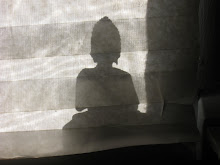
Tuesday, September 27, 2011
Central Oregon Sojourn with my friend Bruce
We climb over Santiam Pass heading east from the maritime climate to the dry desert air. Newberry Crater is our destination for the night and the fee at Chief Paulinas Campground is only ten dollars. The forested slope behind us is scattered with dry dead limbs fallen on the forest floor from lodge pole pine reaching the end of their life cycle, some are broken off from windstorms, plenty of wood for a fire and a good place to spend the night.
Then it’s on farther east dropping down unto the desert floor and into Christmas Valley passing cattle ranches, hay fields and thousand acre spreads of alfalfa with double metal wide mobile homes. Sage, scrub, bunchgrass and rabbit brush are signs of life out on this barren landscape. Rundown shacks and old beat-up pickups and travel trailers and campers are a sheepherder or ranch hand’s shelter. A broken down fence and dilapidated barn is remains of what was left behind from a ranch owner that went broke and his dreams turned to another drink. A black thin tired looking horse stands in an old dusty corral and a few miles down the road sits another manufactured home with a jumbo new satellite dish. Off to the north below Squaw Ridge a herd of cows graze on the open range.
The old settlement of Fort Rock sits on the other side of the highway with weathered log cabin structures and a church, signs of white man settling here back in the 1800s. Ravens greet us at the entrance and more wheel above us as we head out to the base of the ancient rock face, carved out from volcanic eruptions and the ice age. The high noon sun casts shadows on the walls with layers of basalt millions of years old. There is no wind where we stand and the sun beats down with little mercy. What was this place like before man arrived? Seems one could see the four corners of this world from the bottom of this lake which is now called Christmas Valley.
Every direction you turn you see more volcanic craters, natural landmarks in the middle of wide expanse of flat desert, fossil beds with ancient markings in the rocks dating back to the prehistoric times. Fiery histories of hot molten lava and old bleached bones lay out in the desert sun. Here in this place called the Lost Forest our thoughts drift in the desert wind in an empty barren land of ponderosas, stunted white pine and juniper crisscrossed with the gray sandy washes.
How do these ancient ponderosa pines survive in this dry desert with only half the amount of rainfall the trees some forty miles away receive annually? How do men’s souls survive in this wasteland here in America in the 21st Century with no place left to go, no more roads to take that haven’t already been taken, no raw land to wander across because it has been hacked away and devoured by industrialization and urbanization?
A jackrabbit scurries through the scrub brush on it’s late afternoon hunt. Rattlesnakes are also local residents here though we don’t encounter any. Two desert wrens take flight with the red glow of the sun as it starts to sink lower on the horizon reminding us of the afternoon of our lives. The north star appears over a ponderosa pine and we build a fire and listen to the night wind and a family of coyotes howling under the new moon. In a few days we will be heading west back over the mountains and into the valley known as civilization.

